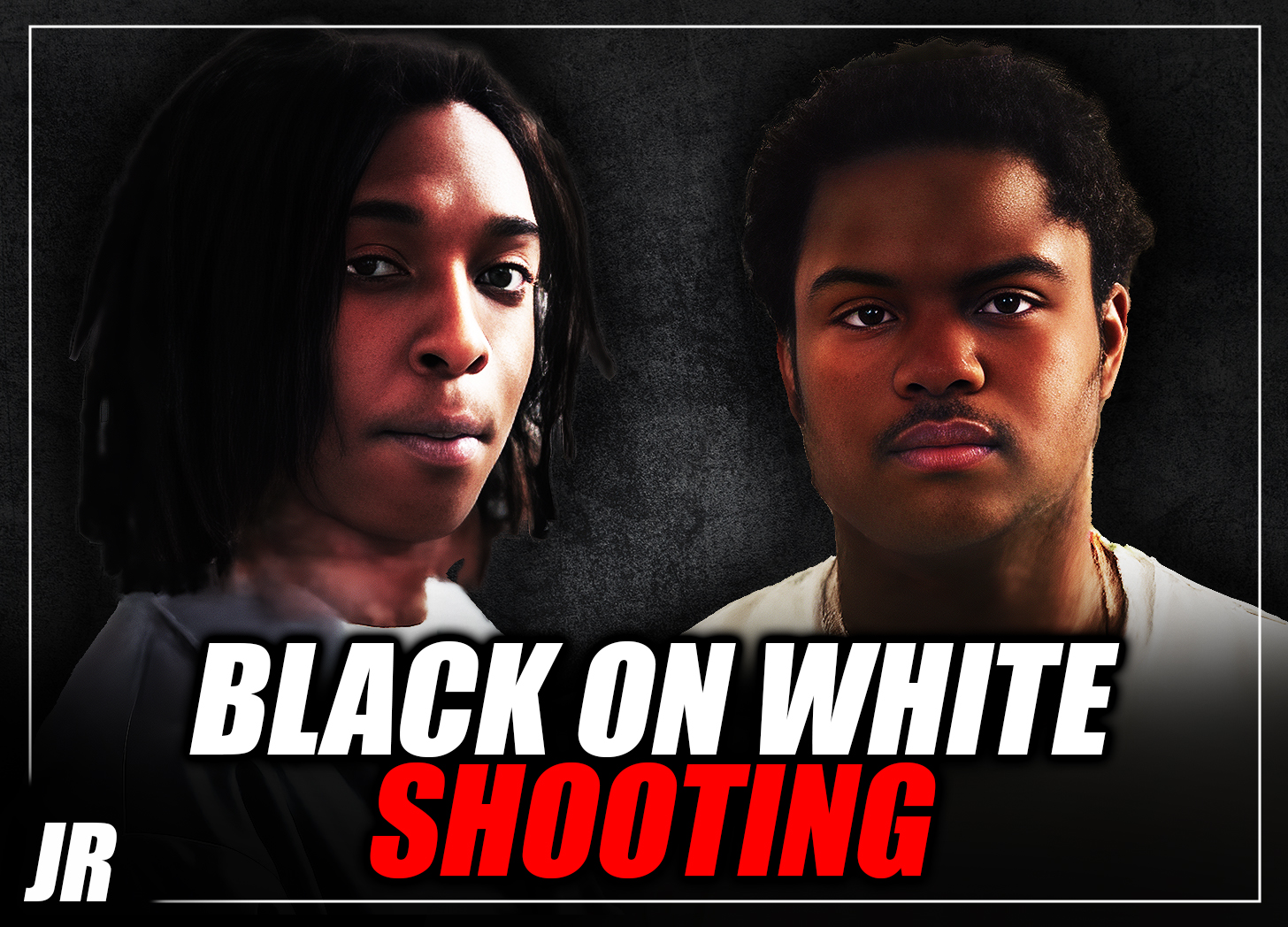By SAM CALDWELL and TREY GARRISON
On the 12th day of the trial of Darrell Brooks, the prosecution continued to hear from Detective Jay Carpenter, whose testimony took a majority of the day’s proceedings. We also heard from Brooks’ first witness, who was allowed to take the stand out of order to accommodate his own schedule.
A long, judicial slog followed that saw Brooks sniffle, appear demoralized, and act argumentative with Judge Jennifer Dorow to the point of once again being removed from the courtroom.

Brooks, a black career criminal and a registered sex offender, is charged with intentionally driving his SUV through the annual Waukesha Christmas Parade on Nov. 21, 2021, striking dozens of White spectators and participants. Six White people died, and 61 were injured and maimed as the self-described anti-White terrorist accelerated into the barricaded parade route and veered into crowds for five blocks.
The state’s more than 70 felony charges against Brooks include six counts of first-degree intentional homicide with a dangerous weapon, 61 counts of recklessly endangering safety with a dangerous weapon, six counts of hit-and-run involving death, and two counts of bail jumping.
First Witness: Detective Jay Carpenter

The testimony of Detective Jay Carpenter dominated most of Tuesday’s proceedings, continuing from where the court left off Monday night. While on the stand, he testified in regard to a roughly five-hour interrogation he conducted with Brooks the day following his parade rampage.
Clips of the interrogation were played at length for the jury. Before the interrogation, Carpenter asserted that police investigators had originally identified Brooks as the primary suspect in the attack after hearing reports linking him to a “domestic abuse” incident near Frame Park.
Carpenter explained that the strategy behind his interrogation was simple: slowly goad simple answers out of Brooks to build a rapport. Once he had Brooks at a certain level of “calm,” the Detective planned to escalate his interrogation and ask him about the parade attack with the hopes of coaxing answers that he might not receive otherwise.
This rationale lasted into the second day when Carpenter finally brought up the parade attack and the real reason Brooks was being held in custody.
Brooks claimed he originally came to Waukesha with a friend who drove him in a tan-colored car and said he was only in the city to watch the Packers game at “Stephanie’s” house. Brooks claimed he had no idea when asked if he knew her last name or address.
Second Witness: Juan Marquez w/ Spanish Interpreter Patrick Ryan

Due to time constraints, the court allowed Darrell Brooks to call his first witness out of order. Alongside a Spanish Interpreter, Patrick Ryan, the witness, Juan Marquez, was present at the parade and a part of the Catholic Community of Waukesha group.
Because of the language barrier, Judge Dorow instructed the jury to only consider the interpreter’s words and disregard different meanings of non-English words. Sr. Marquez testified that a vehicle on the parade route injured his leg. He was marching with the Catholics alongside his wife and son.
Brooks’s strategy appeared to try desperately to impeach Marquez as a witness by referring to a statement written in a police report addressed by him. In it, Marquez claimed that the SUV that had hit him was black, not red, and hoped he could use this slip-up in recollection as a means to cast doubt on the case.
During a friendly cross-examination by the state, Deputy DA Lesli Boese asked Marquez if he had heard any warnings of an oncoming vehicle. Marquez testified that he had no warning prior to being struck.
Boese was interrupted several times by Brooks, who objected to leading. Judge Darrow noted several times that attorneys might ask leading questions on cross-examination. The state used this opportunity to introduce Exhibit 161, which showed a video of the red Ford hitting Marquez. Sr. Marquez’s language barrier prevented him from listening to Brook’s various exasperated comments at having his objections overruled.

A fiery Judge Darrow stopped the cross-examination and reprimanded Brooks for his continuous interruptions. Brooks once again accused her of judicial misconduct, asking, “So I’m going to let you fix the trial because you don’t want to tell the truth to the jury?!”
At this point, the Judge promptly removed him from the courtroom, the first time she had done so with the jury present. Explaining her decision to refrain from finding the defendant in contempt, Darrow said: “[i]n my opinion if this court were to find Mr. Brooks in contempt, it would allow him to profit from his own wrongdoings in delaying the proceedings…to hold him in custody until such time as he is willing to abide by the rules.”
Once back on the record, neither the state nor Brooks asked any follow-up questions. Judge Darrow asked Brooks if he wished to return to the main courtroom and conduct himself appropriately. The defendant didn’t answer, so she refused to bring him back.
However, he was brought back anyway to the main courtroom and continued to press the Judge on subject matter jurisdiction.
Third Witness: Detective Jay Carpenter

After a break, Detective Jay Carpenter returned to the stand to resume his testimony. In a recording of the interrogation, Carpenter and a partner, as seen in the video, then began pressing Brooks on the parade attack and the red SUV he had been driving.
This was when Brooks refused to answer any further questions until Carpenter could specifically name some of the charges he was facing. Carpenter explained that he withheld that information because he legitimately didn’t know the full extent of the charges at that time, but also to prevent Brooks from shutting down or giving him further opportunities to lie.
Interestingly, Brooks began to gripe about severe shoulder pain, making demands of over-the-counter painkillers like Tylenol and making exaggerated claims of medical duress as soon as the parade attack had been brought up. Detective Carpenter then testified that at this moment in the video, he believed that Brooks’ claims “seemed and felt deceptive” and appeared to be nothing more than a “stalling tactic.”
“Mr. Brooks was still unwilling to explain to us, give us the clarity … to understand and know why he did it,”
Detective Jay Carpenter
During cross-examination, Brooks peppered Carpenter with questions relating to their own knowledge of the parade attack, asking why they didn’t immediately bring it up despite holding Brooks for more than 24 hours. Carpenter said that he was still receiving “chaotic and fluid” information regarding the incident.
Brooks asked Carpenter about the FBI’s role in the investigation. Specifically, Brooks wanted to know why the FBI stopped being a part of the investigation—leaving it to be completed by local law enforcement. Referring to FBI findings, Carpenter responded, “My understanding was there wasn’t a terrorism link.”
Prosecutors anticipated wrapping up their case Wednesday. It’s unclear how long it could take for Brooks to present his own defense, but there are 11 other witnesses he still plans to call.

The Justice Report will continue to provide daily coverage of the trial.
For background on Brooks and his alleged anti-White crimes, read a summary by Justice Report. To view the National Justice Party/Media2Rise documentary on Brooks and the Waukesha attack, click here.
Have a story? Please forward any tips or leads to the editors at [email protected]





















